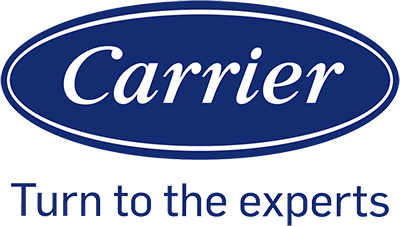Dust, dirt, and debris build up in air ducts over time, and that buildup can put extra strain on an HVAC system. When airflow becomes restricted, the system works harder, which can shorten its lifespan. Cleaning air ducts on a regular schedule helps protect the system and supports its long-term durability.
We often think about changing filters or scheduling seasonal tune-ups, but duct cleaning is another step that can make a real difference. By keeping ducts clear, we reduce wear on parts, improve efficiency, and help the system run smoothly. This preventive measure can also support better indoor air quality, which benefits everyone in the space.
As we look at the importance of duct cleaning, we will also explore the preventive benefits, the best practices for maintenance, and the other factors that play a role in how long an HVAC system lasts. Together, these steps give us a clear path to extending system life and reducing costly repairs.
The Importance of Air Duct Cleaning for HVAC System Durability

Clean air ducts help reduce strain on heating and cooling equipment, lower the risk of early breakdowns, and keep key parts working as designed. By removing dust and buildup, we allow the system to move air more freely and maintain stable performance over time.
How Air Duct Cleaning Prevents System Wear
When dust, dirt, and debris collect inside air ducts, the HVAC system must push harder to circulate air. This added effort increases energy use and creates unnecessary wear on motors, fans, and other moving parts.
We can limit this stress by keeping ducts clear. Clean ducts reduce airflow resistance, which lowers the workload on the blower motor and helps it run at normal speed instead of overworking.
Less strain also means fewer chances for overheating or part failure. For example, a blower motor that does not have to fight against clogged ducts is less likely to burn out early.
Regular duct cleaning also helps minimize the spread of dust into filters and coils. This step reduces buildup in other areas of the system, which further prevents extra wear.
Impact on HVAC Lifespan
The service life of an HVAC system depends on how well it can maintain efficiency with minimal stress. When ducts stay clean, the system runs closer to its intended design, which helps extend its overall lifespan.
A clogged system often cycles on and off more frequently. This short cycling increases wear on compressors and motors, which can shorten their usable years. Cleaning ducts supports steady operation and avoids unnecessary cycling.
We also see fewer repair needs when ducts remain clear. By lowering strain on key parts, we reduce the chance of costly breakdowns that can shorten the system’s life.
In many cases, a well-maintained system with clean ducts can last several years longer than one that operates under constant strain from dirty ducts. This difference can delay the need for a full replacement.
Protecting Major HVAC Components
Air ducts connect directly to the system’s most important components, including the blower, evaporator coil, and heat exchanger. Dirt and debris moving through the ducts can settle on these parts and interfere with their function.
For example, dust on the evaporator coil reduces its ability to absorb heat. This forces the system to run longer and increases the chance of coil damage.
The blower motor also suffers when ducts are dirty. Restricted airflow causes the motor to run hotter, which can lead to overheating and early failure.
We also protect the heat exchanger by keeping ducts clean. Reduced airflow can cause it to overheat and crack, which is both costly and unsafe. By maintaining clean ducts, we reduce these risks and keep major components in better condition for longer use.
Preventive Benefits of Regular Air Duct Maintenance
When we maintain air ducts on a regular schedule, we help the HVAC system run more smoothly, use less energy, and avoid expensive repairs. Clean ducts keep airflow steady and reduce the strain on system parts that often lead to breakdowns.
Reducing System Breakdowns
Dust, dirt, and debris can build up inside ducts and restrict airflow. When air cannot move freely, the blower motor and other parts must work harder. This extra strain often leads to overheating or early wear.
By keeping ducts clean, we reduce the risk of clogs that cause uneven air distribution. Consistent airflow also helps prevent frozen coils in cooling systems and overheating in heating units. Both problems can shut down the system and require service.
Routine duct cleaning also helps us catch early signs of damage. Technicians often spot leaks, loose connections, or mold growth during maintenance. Addressing these issues before they spread lowers the chance of sudden breakdowns.
Improving Energy Efficiency
When ducts stay clean, the system does not need to push air against heavy blockages. This lowers the amount of electricity or fuel needed to heat or cool a space. In many cases, energy bills drop after maintenance because the system runs closer to its intended performance.
We also avoid wasted energy caused by leaks. Even small gaps in ductwork can let out heated or cooled air. A professional inspection during cleaning often includes sealing these leaks, which improves efficiency.
Key benefits of clean ducts for efficiency include:
- Less energy wasted through leaks
- Lower strain on motors and fans
- More even heating and cooling across rooms
Lowering Long-Term Repair Costs
Repair bills for HVAC systems often come from parts that wear out too soon. Motors, compressors, and coils cost a lot to replace. When ducts stay clean, these parts face less stress and last longer.
We also spend less on emergency service calls. Breakdowns that happen during extreme weather often require urgent repairs, which cost more. Preventive duct maintenance reduces the chance of these situations.
Over time, the money saved on fewer repairs and lower utility bills outweighs the cost of routine cleaning. By investing in maintenance, we extend the life of the system and avoid major expenses later.
Best Practices for Effective Air Duct Cleaning
We can protect our HVAC system by cleaning ducts at the right time, hiring trained workers, and checking for early signs of wear. These steps help us reduce dust buildup, keep airflow steady, and avoid costly repairs.
Recommended Cleaning Frequency
We should not clean air ducts on a fixed yearly schedule unless a problem exists. Instead, we base cleaning on specific conditions. For example, ducts may need cleaning if we see visible dust blowing from vents, mold growth inside ducts, or pest infestations.
In most homes, ducts stay clean for several years. The National Air Duct Cleaners Association (NADCA) suggests cleaning every 3 to 5 years under normal conditions. Homes with pets, heavy dust, or recent renovations may require more frequent cleaning.
We also consider the age of the HVAC unit. Older systems may collect debris faster, especially if filters are not changed on time. Keeping a log of filter changes and inspections helps us decide when duct cleaning is necessary.
Choosing Qualified Professionals
Not all service providers follow the same standards. We should only hire companies that use NADCA-certified technicians. Certification shows that workers follow proper cleaning methods and safety practices.
A qualified professional uses specialized tools such as high-powered vacuums and rotary brushes. They also seal access points after finishing the job. We should avoid providers who offer very low prices because they may skip important steps or damage the ducts.
Before hiring, we ask for a written estimate and details about the cleaning process. A reliable company explains what they will do and provides proof of insurance. Checking customer reviews and references also helps us confirm their reputation.
Inspection and Maintenance Tips
We can reduce the need for frequent duct cleaning by focusing on regular inspections. Checking air filters every month and replacing them when dirty keeps dust from entering the ducts. Using high-efficiency filters improves protection.
We should also look for signs of leaks or gaps in ductwork. Small leaks allow dust and moisture to enter, which lowers system efficiency. Sealing these areas prevents buildup and improves airflow.
It also helps to schedule annual HVAC maintenance. During these visits, technicians can inspect coils, fans, and duct connections. This routine care prevents small issues from turning into larger problems.
Additional Factors Influencing HVAC System Durability
The durability of an HVAC system depends on more than just mechanical parts. Air quality and the substances that collect inside ductwork both play a direct role in how well the system performs over time.
Indoor Air Quality Considerations
When we maintain good indoor air quality, we reduce stress on the HVAC system. Clean air means fewer particles pass through filters and coils, which helps the system run more efficiently.
Poor air quality often comes from dust, smoke, or high humidity. These conditions can clog filters, promote microbial growth, and force the system to work harder. Over time, this added strain shortens the lifespan of key components.
We can address these issues by using high-efficiency filters, scheduling regular filter replacements, and controlling humidity with dehumidifiers when needed. Ventilation also plays a role, as proper airflow prevents stale air and reduces buildup of pollutants.
By managing indoor air quality, we not only improve comfort but also limit the wear and tear that leads to early breakdowns.
Common Contaminants in Ductwork
Ductwork often traps materials that affect both air quality and system durability. Dust, pollen, and pet dander are common, but we also find mold spores and bacteria in damp ducts.
These contaminants block airflow and reduce efficiency. When ducts become coated with debris, the system must work harder to push air through, which increases energy use and mechanical strain.
Some of the most common contaminants include:
- Dust and lint – clog filters and ducts
- Mold and mildew – thrive in moisture and damage air quality
- Pollen and dander – trigger allergies and accumulate quickly
- Insects and rodents – leave droppings and nesting materials
Routine inspections and cleaning help prevent buildup. By keeping ducts free of these materials, we reduce unnecessary stress on the blower motor, coils, and other parts that affect system longevity.




